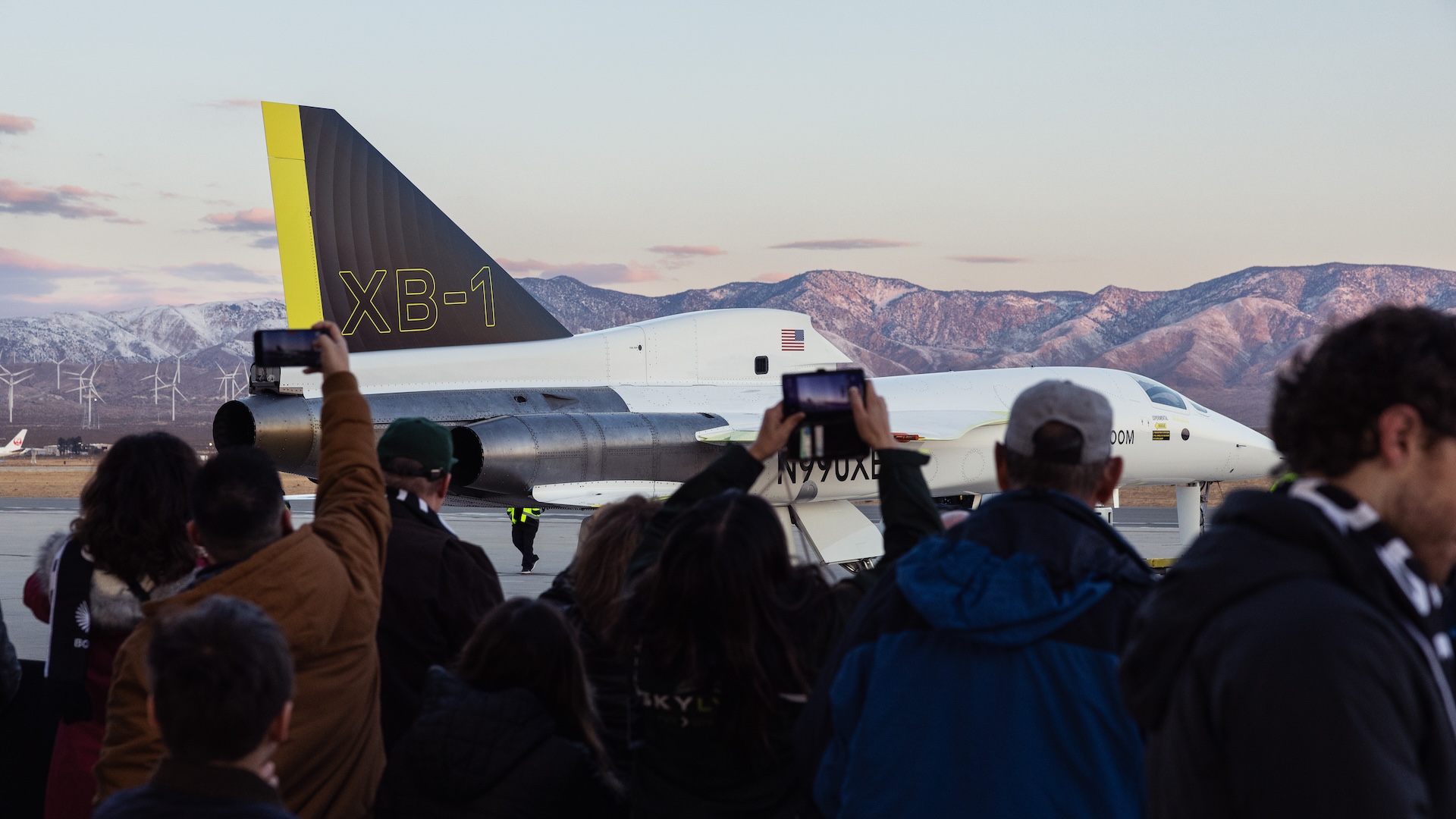
Boom Supersonic’s XB-1 has successfully broken the sound barrier, becoming the first supersonic civil aircraft in U.S. history.
Today (Jan. 28), the XB-1 took off from Mojave Air and Space Port in California and reached Mach 1.1 — equivalent to 1.1 times the speed of sound, or 844 mph (1,358 km/h). It reached this record speed on three separate occasions during its 34-minute test flight.
Boom Supersonic is now the first independent company to break the sound barrier with an aircraft intended for civilian use. (The Concorde was created in agreement with the U.K. and French governments, while the Tupolev Tu-44 was designed and manufactured with support from the Soviet government.)
In the first phase of the flight, the aircraft climbed to 34,000 feet (10,300 meters) in just a few minutes, showcasing its ability to perform extremely steep climbs. It then performed several subsonic checks, running through safety measurements similar to those performed in previous XB-1 test flights.
The aircraft then pushed on to supersonic speeds. Once the aircraft hit Mach 1.1, engineers remotely activated the “flutter excitation system” to test the airflow around the craft and make sure it wasn’t affecting the integrity of the plane’s fuselage. After this, the aircraft performed maneuvers to try out its handling and flying abilities at high speed, as well as tested its “hands-off” behavior.
The XB-1 has a curved shape and downward-curving nose to reduce wave drag and airflow, thereby keeping it stable and preventing damage.
The XB-1 sustained its record-breaking airspeed for just a handful of minutes, as Boom Supersonic was only allowed to use a relatively small pocket of airspace.
The successful test flight, which was live-streamed by Boom Supersonic, proved the capabilities of several in-house technologies. In addition to its three Symphony engines, the XB-1 has two cameras on its landing gear that enable pilots to see the runway clearly, thus negating the need for a moving “droop nose” like the one on the Concorde. All in-flight performance was carefully measured by teams on the ground
“We just collected some really valuable data, and I can’t wait to get my hands on that data,” Nick Sheryka, chief flight test engineer for the XB-1, said during the livestream.
“The entire control room team is going to spend several days poring over the data that we collected here during today’s flight,” Sheryka added. “And they’re going to be checking the actual performance that was demonstrated against what our models predicted, and how we expected it to fly.”
Data collected on these successful tests bring the company closer to building the Boom Overture, a planned supersonic passenger airliner intended to start regular commercial operations in the 2030s.
“So we’ve got our litmus test here today, our proof data that we’ll use to inform our future efforts on Overture,” Sheryka said.
If fully realized, Boom Overture would shorten transatlantic flights to less than four hours, while a flight from San Francisco to Tokyo could take just six hours.
The XB-1 will fly at supersonic speeds again as soon as next week. The company is planning on taking photos during this flight, using a process known as “Schlieren photography,” which is used to visualize shock waves.
